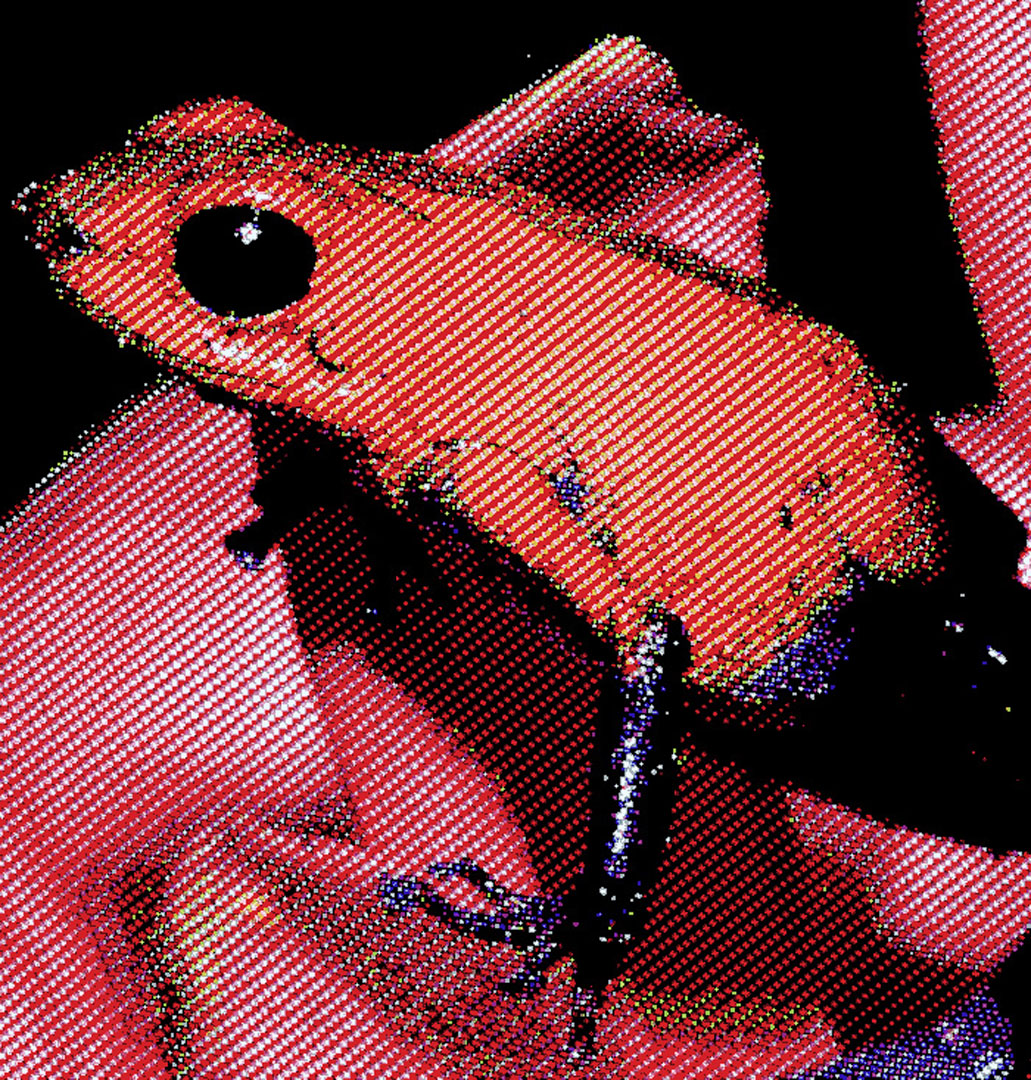“Color images visible under UV light” by Hersch, Donzé and Chosson
Conference:
Type(s):
Title:
- Color images visible under UV light
Presenter(s)/Author(s):
Abstract:
The present contribution aims at creating color images printed with fluorescent inks that are only visible under UV light. The considered fluorescent inks absorb light in the UV wavelength range and reemit part of it in the visible wavelength range. In contrast to normal color printing which relies on the spectral absorption of light by the inks, at low concentration fluorescent inks behave additively, i.e. their light emission spectra sum up. We first analyze to which extent different fluorescent inks can be superposed. Due to the quenching effect, at high concentrations of the fluorescent molecules, the fluorescent effect diminishes. With an ink-jet printer capable of printing pixels at reduced dot sizes, we reduce the concentration of the individual fluorescent inks and are able to create from the blue, red and greenish-yellow inks the new colorants white and magenta. In order to avoid quenching effects, we propose a color halftoning method relying on diagonally oriented pre-computed screen dots, which are printed side by side. For gamut mapping and color separation, we create a 3D representation of the fluorescent ink gamut in CIELAB space by predicting halftone fluorescent emission spectra according to the spectral Neugebauer model. Thanks to gamut mapping and juxtaposed halftoning, we create color images, which are invisible under daylight and have, under UV light, a high resemblance with the original images.
References:
1. Bala, R. 2003. Device characterization. In Sharma (2003a), Ch. 5, 269–379.Google Scholar
2. Balasubramanian, R. 1999. Optimization of the spectral Neugebauer model for printer characterization. Journal of Electronic Imaging 8, 2, 156–166.Google ScholarCross Ref
3. Chosson, S. and Hersch, RD. 2002. Color Gamut Reduction Techniques for Printing with Custom Inks. In Symposium on Electronic Imaging, SPIE Vol. 4663, 110–120.Google Scholar
4. Coyle, W. J., and Smith, J. C. 2004. Methods and ink compositions for invisibly printed security images having multiple authentication features. US Patent Application 10/818,058.Google Scholar
5. Emmel, P. and Hersch, R. D. 1998. Spectral Color Prediction Model for a Transparent Fluorescent Ink on Paper, Proc. IS&T 6th Color Imaging Conf., 116–122Google Scholar
6. Emmel, P. 2003. Physical models for color predictions. In Sharma (2003a), Ch. 3, 173–238.Google Scholar
7. Hains, C., Wang, S.-G., and Knox, K. 2003. Device characterization. In Sharma (2003a), Ch. 6, 385–490.Google Scholar
8. Harrington, S. J. 1992. Principles for mapping from full color to highlight color. In Proc. of IS&T’s 8th International Congress on Advances in Non-Impact Printing, 459–462.Google Scholar
9. Holladay, T. M. 1980. An optimum algorithm for halftone generation for displays and hard copies. In Proceedings of SID, Vol. 21, 185–192Google Scholar
10. Hunt, R. W. G. 1991. Measuring Color. Ellis Horwood, Chichester, England, p. 54.Google Scholar
11. MacDonald, L. W., Morovic, J., and Xiao, K. 2000. A topographic gamut mapping algorithm based on experimental observer data. In Proceedings of 8th IS&T/SID Color Imaging Conference, 311–317.Google Scholar
12. Morovic, J. 2003. Gamut mapping. In Sharma (2003a), Ch. 10, 639–685.Google Scholar
13. Narita, S., and Eto, K. 2002. Method for fluorescent image formation, print produced thereby and thermal transfer sheet thereof. US Patent US 7,005,166 B2.Google Scholar
14. Nassau, K. 1983. The Physics and Chemistry of Color. John Wiley & Sons, New York City, NY, pp. 70 and 400–405.Google Scholar
15. Neugebauer, H. E. 1937. Die theoretischen Grundlagen des Mehrfarbenbuchdrucks. vol. 36(4), 73–89. Reprinted in Neugebauer Memorial Seminar on Color Reproduction, SPIE Vol. 1184, 194–202.Google Scholar
16. Ostromoukhov, V. 1993. Chromaticity gamut enhancement by heptatone multi-color printing. In Symposium on Electronic Imaging, SPIE Vol. 1909, 139–151.Google Scholar
17. Parulski, K., and Spaulding, K. 2003. Color image processing for digital cameras. In Sharma (2003a), Ch. 12, 727–757.Google Scholar
18. Power, J. L., West, B. S., Stollnitz, E. J., and Salesin, D. H. 1996. Reproducing color images as duotones. In Proceedings of ACM SIGGRAPH 96, ACM Press, 237–248. Google ScholarDigital Library
19. Sharma, G., Ed. 2003a. Digital Color Imaging Handbook. CRC Press. Google ScholarDigital Library
20. Sharma, G. 2003b. Color fundamentals for digital imaging. In Sharma (2003a), Ch. 1, 1–114.Google Scholar
21. Stollnitz, E. J., Ostromoukhov, V., and Salesin, D. H. 1998. Reproducing color images using custom inks. In Proceedings of ACM SIGGRAPH ’98, ACM Press, 267–274. Google ScholarDigital Library
22. Stone, M., Cowan W., Beatty J. 1988. Color Gamut Mapping and the Printing of Digital Color Images, ACM Transactions on Graphics, Vol. 7, No. 3, Oct. 1988, 249–292. Google ScholarDigital Library
23. Tzeng, D.-Y., and Berns, R. S. 2000. Spectral-based six-color separation minimizing metamerism. In Proceedings of the 8th IS&T/SID Color Imaging Conference, 342–347.Google Scholar
24. Van Renesse, R. L. 2005. Optical Document Security. Artech House, London, 3rd edition, Chapter 4, Printing Inks and Printing Techniques, 97–127, Section on fluorescent inks, 98–104.Google Scholar
25. Viggiano, J. A. S. 1990. Modeling the color of multi-colored halftones. In Proc. of the Technical Association of the Graphic Arts, TAGA, 44–62.Google Scholar
26. Wyble, D. R., and Berns, R. S. 2000. A Critical Review of Spectral Models Applied to Binary Color Printing. Journal of Color Research and Application Vol. 25, No. 1, 4–19.Google ScholarCross Ref
27. Wyszecki G. and Stiles W. S., 1982, Color Science, 2nd Ed., Wiley.Google Scholar
28. Yule, J. A. C., and Nielsen, W. J. 1951. The penetration of light into paper and its effect on halftone reproduction. In Proceedings of the Technical Association of the Graphic Arts, TAGA, vol. 3, 65–76.Google Scholar





